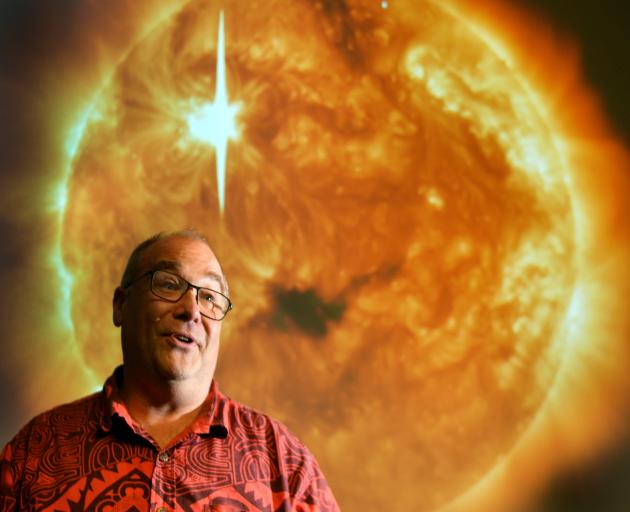They may look stunningly beautiful, but any time an Aurora Australis paints our skies, there is the potential for it to knock out our power grids and other high-tech infrastructure.
So scientists are saying the latest light show is serving as a timely reminder for people to be prepared in case they are without electricity for up to several days.
University of Otago physics professor Craig Rodger said the colourful phenomenon was caused by coronal mass ejections (CMEs) — explosions of plasma from the sun that are shot into space.
The vast majority of these do not impact the Earth but, on the rare occasions that they do, the CME can cause a geomagnetic storm on Earth.
The storms usually go unnoticed because Earth’s magnetic field shields us from the particles, but it can cause issues with electricity grids, radio signals, navigation systems, satellites and other infrastructure.
In severe geomagnetic storms, the CME interacts with the Earth’s magnetic field, disrupting it and inducing additional electrical currents down long electricity transmission lines.
These additional currents can damage equipment essential to transmitting and generating electricity, such as power transformers.
Tuhura Otago Museum director and astronomer Dr Ian Griffin said the present storm was caused by an "enormous" sun spot about 15 times the diameter of Earth.
While it was the most powerful to hit the planet since 2003, he said it was relatively mild, and more intense auroras could occur over the coming weeks and months as the sun headed into its most active period, the solar maximum.
He said there could be dangers associated with the upcoming solar storms.
"While they can be incredibly beautiful, they are also a threat."

And in 1989, a storm took out the power grid over a large part of North America.
Just a few months ago, some of Elon Musk’s satellites were taken down by a solar storm, he said.
"We really need to understand more about them and that’s why scientists around the world are studying them.
"It’s definitely something we should have on the National Risk Register, along with tsunamis, earthquakes and floods."
Prof Rodger has been working with Transpower for many years to develop protocols for dealing with space weather and protecting New Zealand’s electricity grid.
Some of those protocols were used at the weekend for the first time when Transpower removed some transmission lines from service on Saturday, to reduced the magnitude of additional currents which could have damaged the grid.
The geomagnetic storm was now subsiding and Transpower had been able to restore all electricity transmission circuits to service without any damage, he said.
Although the auroras were fading, it was possible they would still be visible tonight, Dr Griffin said.













